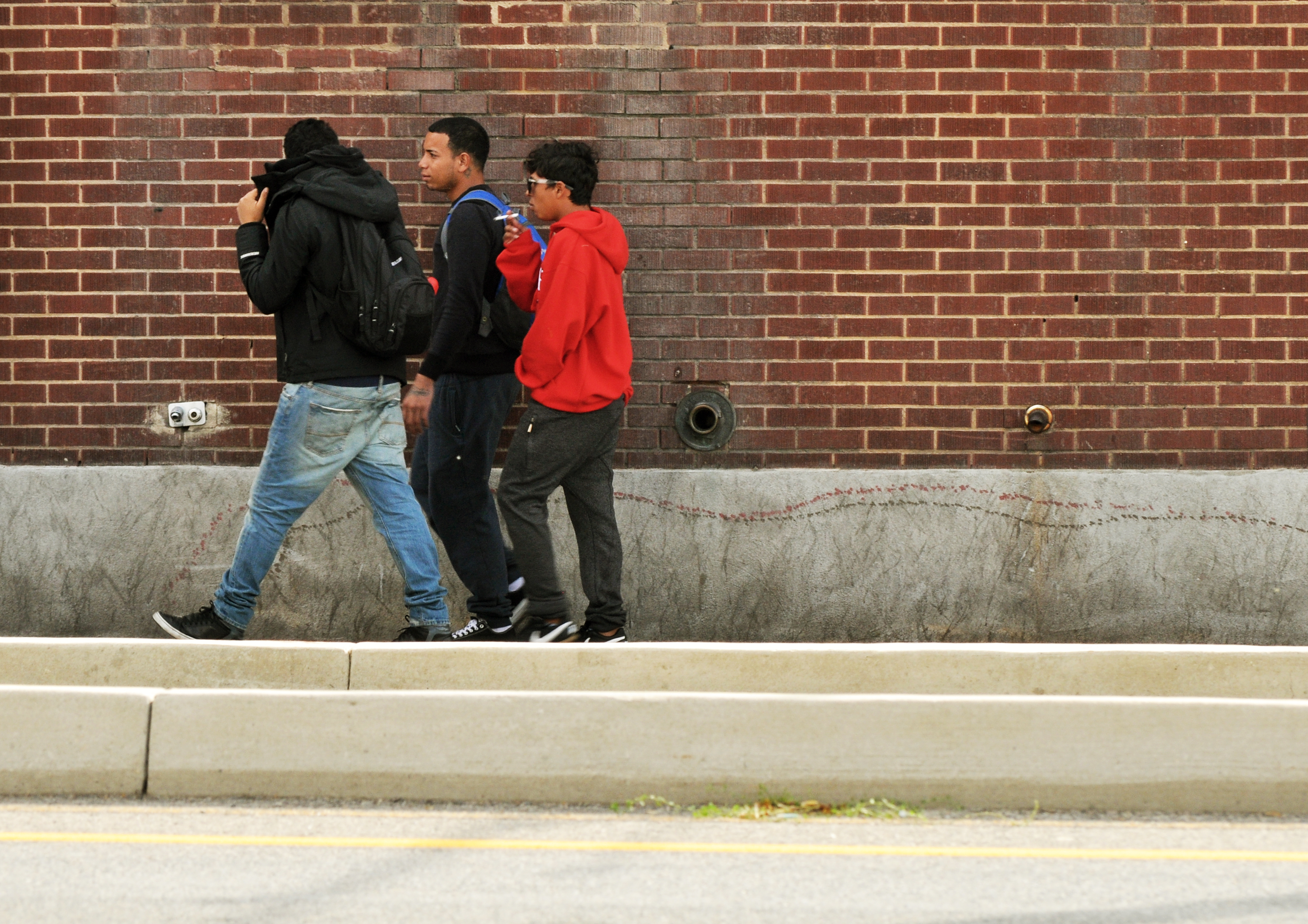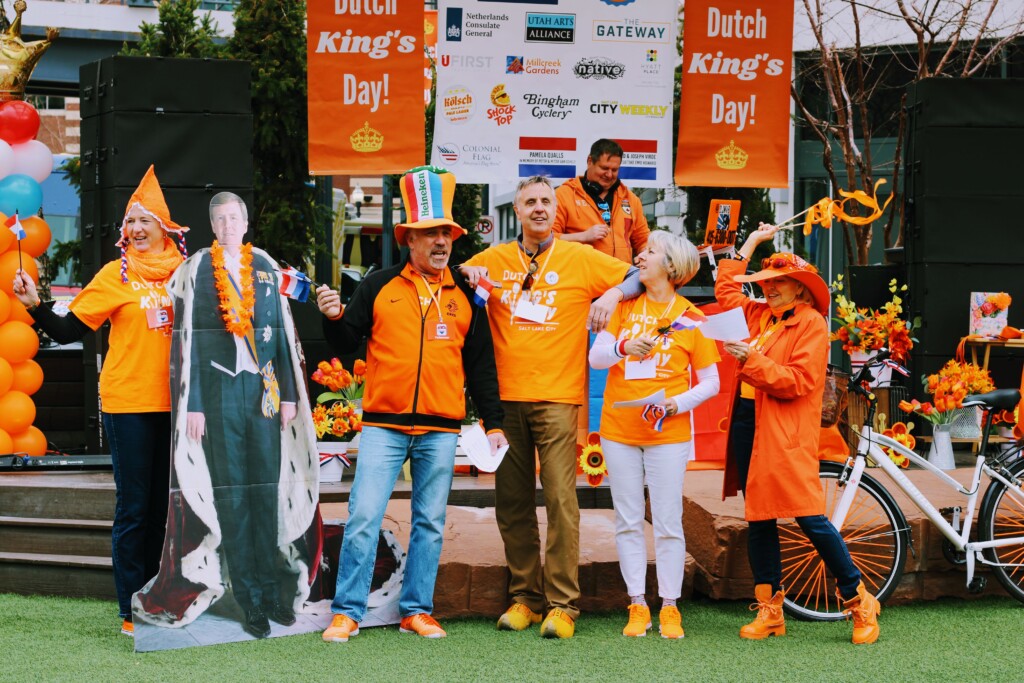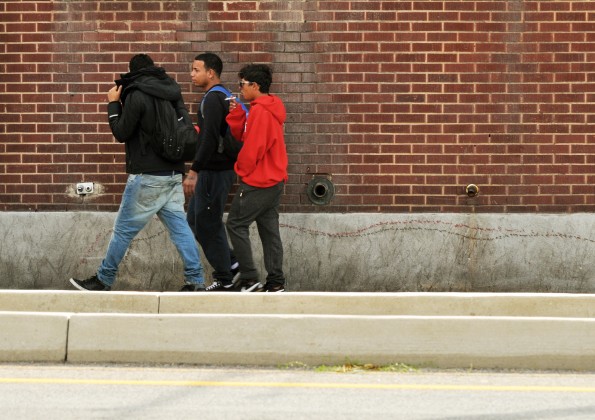
People often reflexively assume that there’s a proportionate link between an increase in a homeless population and drug-related crime, but something more egregious is happening in the blocks near Salt Lake’s homeless shelters, and what residents and business owners are witnessing is shocking.
Realtor Babs De Lay opened her Utah Urban Homes office on the corner of 200 S/400 W in 2001 in the same building where in 1998 she bought an apartment. Along the entire west and south lengths of her office space are windows to a distressing street reality show. “We’ve escalated from winos to heavy, heavy drug users and sex traffic,” she remarks. From inside she identifies dealers, points to where a young woman solicits sex, jokes about “Mike and Ike,” the nicknames she and her staff have for a pair who work for the dealers. Babs regularly photographs drug deals in action, and has pictures on her cell phone of a man being assaulted by a pack of thugs, one swinging a pipe. “There were teeth and blood all over the sidewalk,” she says…right outside her office. “We care about the chronic homeless,” she notes, “But I don’t feel like I can go for a walk in my own neighborhood. We need more protection.”
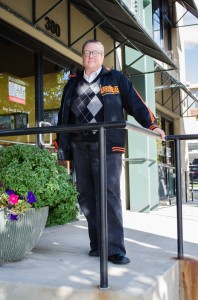
Jade Market has been at its 200 South location since 2006. “We’ve seen a shift from the chronic homeless to a newer, younger population,” observes owner Mary Gordon. “There are deals going on all the time, and the biggest change has been the increase in spice and heroin. Spice users can be really unstable and belligerent. Heroin use is rampant. I’ve had a huge spike in shoplifting. In eight years I’d had three break-ins. This summer alone I had three break-ins.”
Just east at Uptown Cheapskate, the staff are scared. The breezeway through the Art Space apartment building attracts dealers and users. Floor manager Anne Goodwin was leaving with friends one afternoon and recalls seeing “a guy passed out with heroin in his hand.” During store hours she confronted a woman who was trying to steal a blouse. “When she took the shirt off,” Anne says, “the sleeve was stained with blood from her track marks.”
Across the street from The Road Home, on 500 West, the patrons and staff at Spy Hop Productions are closer to ground zero. A sterilized version of what they’ve witnessed from inside their offices would include the words urinate and defecate. And drug dealers hit on the youth using the facility. “The volume of totally conspicuous drug dealing with little regard for getting caught didn’t exist when we moved into this space in March of 2008,” says Executive Director Kasandra Verbrugghen. “There has also been an increase in public drug use and violence that goes along with the dealing. We began really noticing the problem a little over two years ago. It’s definitely a tough issue for a growing city.”
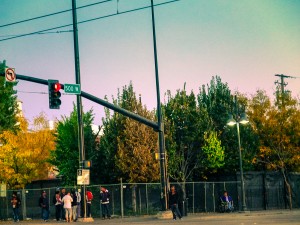
The Panhandling Problem
For residents and business people on 200 South between 300 and 500 West, panhandling is part of their daily milieu, an exchange that is at best a simple request with a simple answer. Readers may be familiar with the pervasive tales of need-to-buy-a-bus-ticket or gasoline. Sometimes we tolerate lies because we believe in helping others.
But in the blocks surrounding Pioneer Park, there has been a dramatic shift in the profile of the person asking for money and the reason why they’re asking. It’s the difference between the fixed-figure panhandler or wandering neighborhood regular, and the edgy, impatient person restlessly trolling street after street plying the same worn out story.
In our investigation into panhandling we observed that aggressive solicitors typically are not down on their luck, but down from their high and need another fix. Aggressive panhandling appears to be much less a homeless problem than a drug problem. For example, families who occupy The Road Home shelter on 500 West rarely panhandle or solicit shoppers for cash. But drug use can induce compulsive behavior, including aggressive panhandling.
Cash in hand, where then can they go to secure more drugs? Just one block away from The Gateway Mall, from Uptown Cheapskate, from Jade Market. The long 200 South city block from 400 to 500 West and intersected by Rio Grande Street is not only the address for two city homeless resource and shelter centers, but also one of the city’s most deplorable drug trafficking areas. The police refer to the fence line on the southeast corner of 200 S and 400 W as “Spice Alley.”
This reporter spent a few days observing and taking notes. I saw a blatant sidewalk drug deal from inside the glass-walled Spy Hop office, the dealer producing balloons of heroin from his mouth to the young couple parked on the street. When photographing a man who I had earlier witnessed handing drugs to a drive-by purchaser, I was non-verbally threatened by his companion who pointed at his eyes, at me, and then punched his open hand with his fist. A homeless man I was conversing with smoked spice with his friends while we were talking. Nearby, a man who had been asleep rose to his knees, unzipped his pants and fully exposed his genitals in what looked like a long, failed attempt to urinate. So what are the city and the SLCPD doing to combat these issues?
The Police Response
In July, the SLPD embarked on a new approach to addressing the complex issue of homelessness and related drug and criminal activity. Deputy Chief Fred Ross commands the 83-man Metro Support Bureau which includes officers from different force divisions.
Dep. Ross claims that part of the problem is the network of outside-the-city drug dealers who descend upon the area every day, prey on the homeless, and also use the dramatically different streetscape as a backdrop for selling drugs. Hanging out and wandering for hours does not appear to be unusual behavior in the blocks surrounding the homeless nexus.
“This is a difficult place to police,” he says. “But we’ve been here only 90 days, and we have made some progress.” The MSB has motivated environmental changes such as eliminating parking on Rio Grande Street. The Bureau has deployed drug-sniffing canine units to locate hidden drugs, and Dep. Ross is requesting foot patrol officers to provide additional police presence.
A key element to MSB’s new approach is its partnership in the Homeless Outreach Services Team (HOST), the collaborative community effort to address homeless resident issues by providing resources rather than focusing only on a law enforcement approach.
“One thing I think people don’t realize,” says Dep. Ross, “is that we’re not here to arrest everybody. Our goal, and the goal of every police department is voluntary compliance, and HOST is becoming the way we police, to lead people to resources.”
Business owners appreciate MSB’s new design and focus. “I am consistently impressed by what a good job they do,” remarks Mary Gordon, who also declares that, “It comes down to the fact that this is a fantastic neighborhood. People want to live here, so they make their peace with it. “

